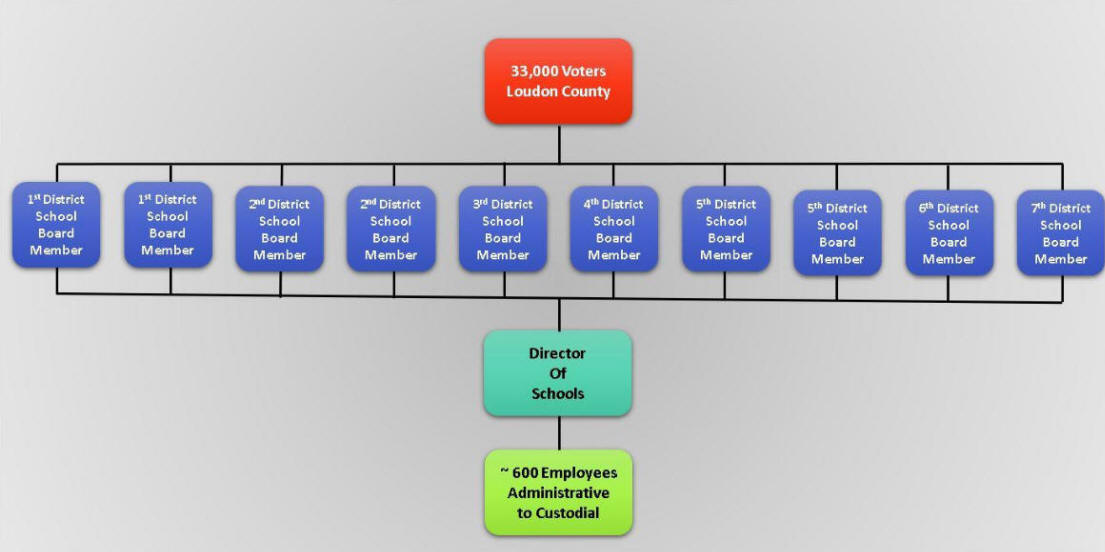
Chain Of Command

| It's always surprising to learn how little some
people understand about how their local government works. During this
debate about the director and the basket ball coach, I've heard and seen
a lot of wildly incorrect statements of how the school system chain of
command works. Let me help to clarify. The flow chart above makes it pretty easy to understand. This is applicable to all county school boards in Tennessee. In Loudon County, there are 10 popularly elected school board members. Those ten board members have only one employee, the director of schools, who they hire for that office. The director of schools is the employer and supervisor of all other employees in the school system, nearly 600 of them in Loudon County. The ten school board members only have any authority when convened in a public meeting. No single or multiple board members have any authority when not in a meeting. Same with county commissioners. County commission nor the county mayor have any authority, what so ever, over the school board members or the director of schools or any school employees. The only legal interaction between the county commission and the school board is funding. It is the responsibility of the county commission to fund the school system. The county commission is not allowed, by law, to reject portions of the school board budget but must fully approve the budget as submitted or fully reject the budget as submitted. Under the law known as, Maintenance Of Effort (MOE), the county commission can never reduce funding to the school system lower than the funding they received the previous year unless enrollment drops. So county commission can not withhold funding from the school board to try to inflect influence. Understand this, county commission nor the county mayor have any control over the actions of the school board, the director of schools or school employees. The director of schools does have complete authority over all employees of the school system. The director of schools can reprimand, suspend or terminate any employee of the school system, with cause, at any time. However, employees, especially tenured employees, have certain rights for hearings and appeals of the director's decisions. The debate goes on as to whether a school superintendent should be appointed by the board or if they should be popularly elected by voters. There are pros and cons for both. For many, many years, school superintendents were popularly elected. I think it was in the nineteen-nineties that the state changed the law to what we have now where school boards appoint superintendents. The main reason for the change cited by state lawmakers was to, "take the politics out of the superintendent's job." Their position was that as an elected official, a superintendent was subjected to far too many political pressures to be able to freely and without politically influence, manage a school system appropriately. Again, that debate continues today. With nearly 600 employees, the director has to deal with every kind of situation imaginable, ninety percent of which the public never knows about due to privacy laws. It can range from teachers having sex in class rooms during school hours, to inappropriate communications or contact between adults and children, inappropriate communications or contact between children, angry parents and so on and so on. Hopefully, the information above will help clear up any confusion as to the chain of command of the school system. |
BACK
1/14/18